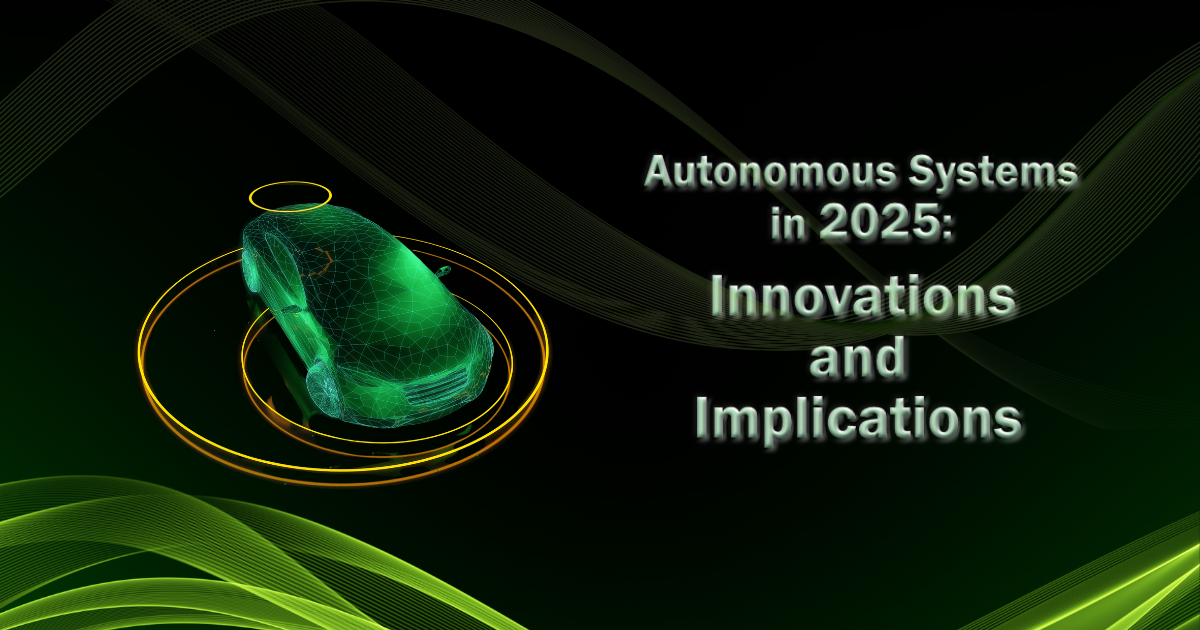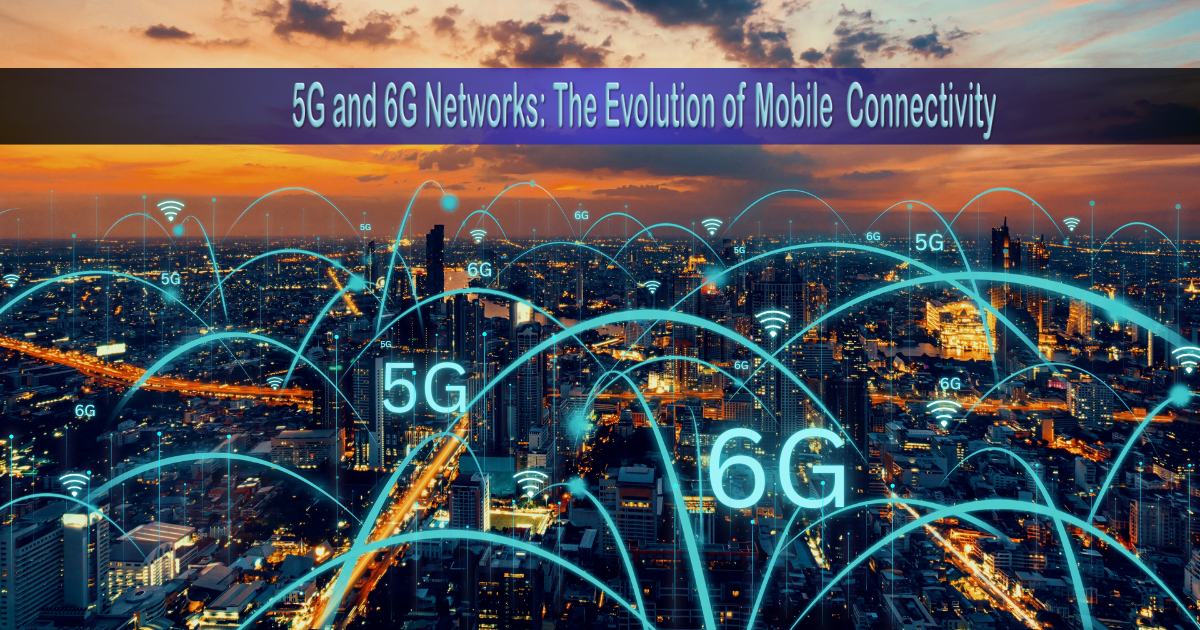
In recent years, Virtual Reality (VR) and Artificial Intelligence (AI) have transformed into crucial technologies with the power to redefine how we interact with digital content and experiences. The combination of these two advanced technologies opens doors to innovative possibilities, shaping industries ranging from entertainment to healthcare, education, and beyond. From a Professional SEO Specialist’s perspective, this intersection of VR and AI also brings unique opportunities to enhance digital marketing, user experience, and content strategy.
In this article, we will explore the integration of VR and AI, their applications, challenges, and best practices for leveraging these technologies for business growth and online visibility.
Understanding Virtual Reality and AI
Virtual Reality (VR) is a simulated environment that immerses users in a 3D digital world. It allows them to interact with this environment using a VR headset or other sensory inputs, creating an illusion of being present in an artificial world. Popular platforms like Oculus Rift and HTC Vive have made VR more accessible to consumers, providing immersive experiences in gaming, training simulations, and virtual tours.
Artificial Intelligence (AI) refers to computer systems that mimic human cognitive functions, such as learning, problem-solving, and decision-making. AI encompasses technologies like machine learning (ML), natural language processing (NLP), and computer vision. With AI’s capacity for analyzing vast amounts of data, personalizing experiences, and automating tasks, it has become a fundamental technology across various sectors.
The combination of VR and AI creates a new paradigm where AI-powered VR systems can adapt to user preferences, optimize experiences in real time, and offer unprecedented levels of personalization and interactivity.
How Virtual Reality Works
At its core, VR operates by creating a computer-generated environment that mimics real-world experiences or invents entirely new ones. The technology relies on three main components:
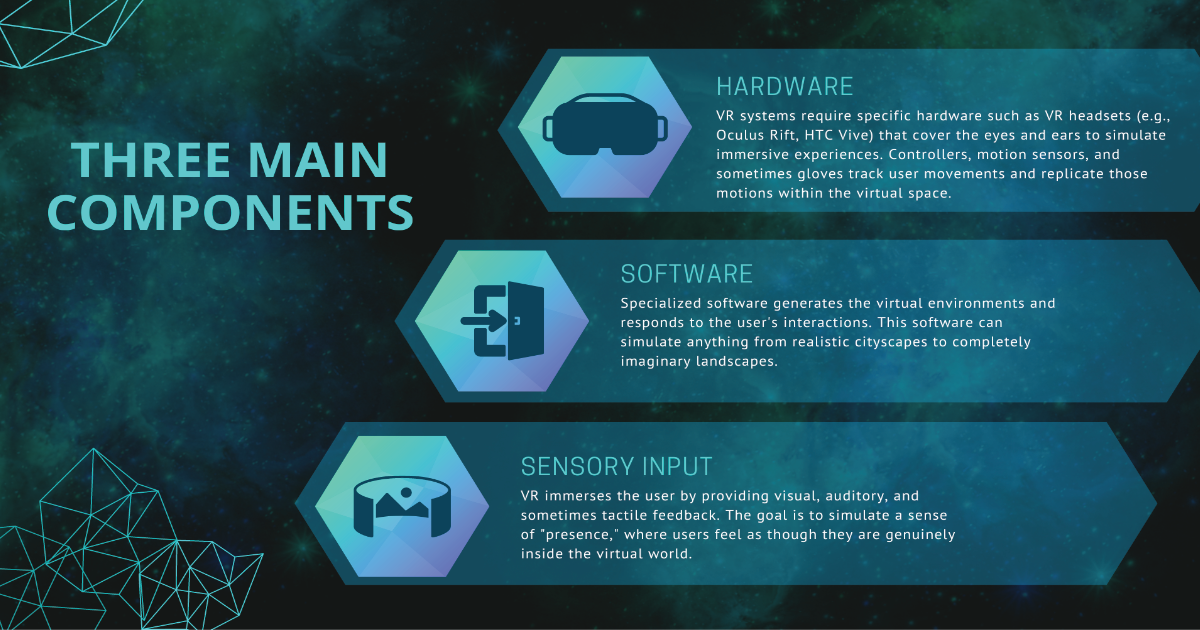
Key Features of VR
• Immersive Environment: The most distinguishing feature of VR is its ability to immerse users in a simulated environment. VR tricks the brain into feeling that the digital world is real through lifelike visuals and sounds.
• Interactivity: VR isn’t just about watching; it’s about interacting with the virtual world. Users can move around, pick up objects, and interact with elements, with real-time feedback altering the environment in response to their actions.
• Sensory Engagement: VR engages multiple senses simultaneously. In addition to sight and sound, some systems incorporate haptic feedback (touch) through gloves or body suits to simulate sensations like pressure, vibrations, or heat.
• Spatial Awareness: One of the most important aspects of VR is spatial tracking, which allows the system to detect and replicate the user’s movements in the digital environment. This creates a more realistic experience by aligning physical actions with virtual responses.
Types of VR Experiences
VR can be classified into several categories, depending on its application and the level of immersion provided:
• Fully Immersive VR: This offers the highest level of immersion, using high-end headsets, motion-tracking sensors, and haptic feedback to transport users into a completely digital world. Examples include high-end gaming or complex simulations used for training in fields like medicine or aviation.
• Semi-Immersive VR: This type involves partial immersion through a screen or projection, such as VR simulators for training or 3D environment exploration with limited interactivity.
• Non-Immersive VR: Often experienced through desktop or mobile devices, non-immersive VR allows users to interact with a 3D environment on a 2D screen, like navigating virtual tours or playing certain games.
The Evolution of Virtual Reality and AI in Digital Marketing
As the digital marketing landscape evolves, brands are constantly seeking innovative ways to engage consumers. VR and AI, when used together, present a golden opportunity for marketers to create more immersive, personalized, and data-driven marketing campaigns.
a. Immersive Consumer Experiences
The combination of VR and AI allows marketers to create highly immersive experiences that go beyond traditional 2D content. For example, AI can analyze consumer behavior to create personalized virtual store environments, adapting product placements, and recommendations based on preferences and shopping history. This enhances the user experience while also boosting the chances of conversions and sales.
b. Virtual Assistants in VR Environments
AI-powered virtual assistants are becoming integral to enhancing customer support and user experiences within VR environments. These assistants can help users navigate complex virtual spaces, answer questions, and provide tailored recommendations. For example, in a virtual showroom or real estate tour, an AI assistant can respond to a user’s inquiries about product specifications or property details in real-time.
c. Data-Driven Personalization
One of AI’s most significant contributions to VR is its ability to analyze user interactions and preferences within the virtual space. AI algorithms can process data generated from VR interactions, allowing for the creation of personalized experiences that cater to individual user needs. For instance, in an educational VR platform, AI can track a user’s progress and adapt the learning material to suit their pace and comprehension level, ensuring an optimized learning experience.
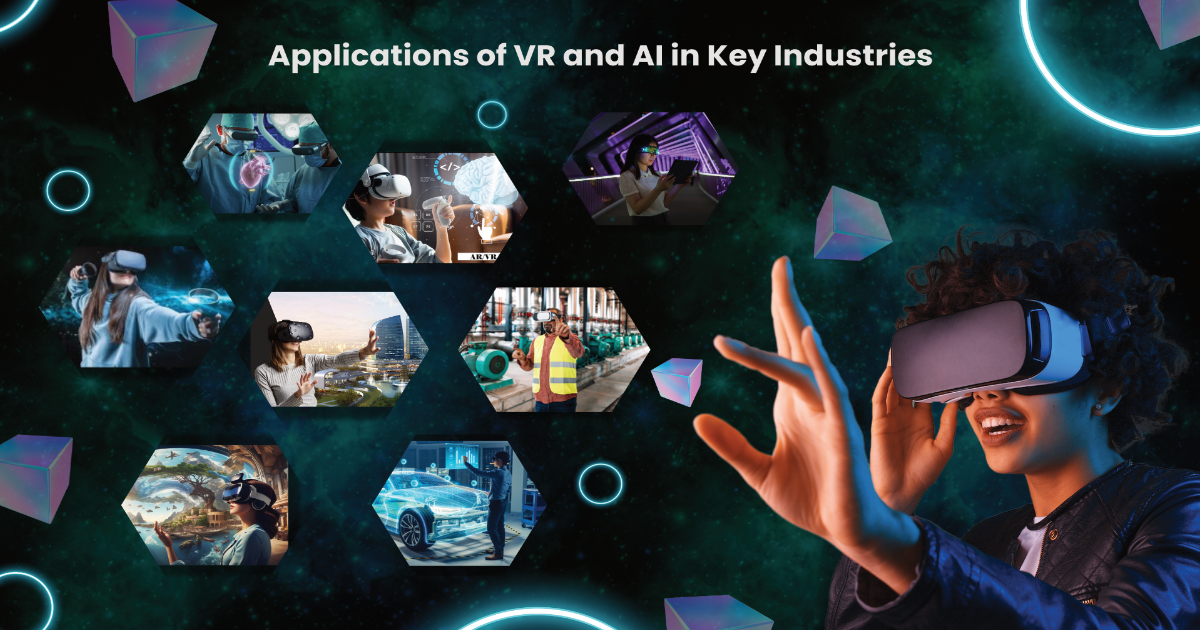
Applications of VR and AI in Key Industries
The fusion of Virtual Reality (VR) and Artificial Intelligence (AI) is revolutionizing multiple industries, driving innovation and offering more personalized, immersive, and efficient solutions. By harnessing the capabilities of both technologies, businesses can enhance their operations, improve customer experiences, and unlock new opportunities. Below are some of the key industries where VR and AI are making a significant impact:
1. Healthcare
VR and AI have transformed healthcare by enhancing medical training, diagnostics, and patient treatment.
Medical Training and Simulation: VR is used to create lifelike simulations for training healthcare professionals. AI plays a key role in analyzing trainee performance, offering real-time feedback, and customizing simulations based on individual learning needs.
Surgery Assistance: AI algorithms can process vast amounts of medical data to provide surgeons with insights and recommendations during operations. When combined with VR, surgeons can rehearse complex procedures in virtual environments before performing them on real patients.
Therapy and Rehabilitation: AI-driven VR applications are used in psychological therapy to treat phobias, PTSD, and anxiety. VR immerses patients in controlled environments, while AI adjusts the experience in real-time based on the patient’s emotional and physical responses.
Diagnostics: AI-powered imaging tools combined with VR visualization techniques help doctors analyze medical images and identify anomalies more accurately. These tools assist in detecting diseases earlier, leading to improved patient outcomes.
2. Retail and E-commerce
Retailers are using VR and AI to create interactive shopping experiences and enhance customer engagement.
Virtual Stores: Customers can explore virtual retail environments from the comfort of their homes. AI personalizes product recommendations based on browsing history, preferences, and purchasing behavior, offering a more tailored shopping experience.
Virtual Try-Ons: In fashion retail, VR allows customers to virtually try on clothes, shoes, or accessories. AI enhances this by analyzing the customer’s body shape and making style suggestions based on past preferences and fashion trends.
Customer Service: AI-powered virtual assistants integrated into VR platforms can provide real-time customer support, guiding users through product selections, answering questions, and even helping with checkout processes, improving overall customer satisfaction.
3. Education
The combination of VR and AI is transforming education by making learning more immersive and adaptive.
Immersive Learning: VR provides students with interactive and immersive experiences, such as virtual field trips to historical sites or simulations of scientific experiments. AI helps to personalize the learning journey by analyzing a student’s progress and adjusting the content to match their learning pace and style.
Virtual Classrooms: VR allows for the creation of virtual classrooms where students can attend lessons, interact with peers, and engage in group activities regardless of their physical location. AI assists educators by identifying students who may need extra help, suggesting targeted resources, and providing insights into overall classroom performance.
Skill Development: AI-powered VR platforms are used for training in technical skills, such as programming or engineering, where students can practice in a safe, virtual environment. AI-driven assessments help identify areas of strength and improvement, ensuring personalized learning paths.
4. Real Estate
VR and AI have reshaped the real estate industry by making property viewing and purchasing more convenient and personalized.
Virtual Property Tours: Potential buyers can take virtual tours of properties without having to visit them physically. AI enhances these tours by offering personalized recommendations based on user preferences, such as budget, location, or home features. AI-powered chatbots can also answer queries during the tour, providing an engaging and interactive experience.
Property Visualization: For under-construction properties, VR allows buyers to visualize how the final product will look. AI can generate predictive models of how the property might age over time or adjust the virtual environment based on different interior design options.
Smart Home Integration: AI can be integrated into VR home tours to simulate smart home features, allowing buyers to experience how they can control lighting, temperature, security, and other smart systems within the property.
5. Entertainment and Gaming
The entertainment and gaming industries are at the forefront of VR and AI adoption, using these technologies to create more immersive and personalized experiences.
Immersive Gaming: VR provides gamers with fully immersive experiences, allowing them to interact with 3D environments in ways that were previously impossible. AI enhances these experiences by making non-playable characters (NPCs) more intelligent and adaptive to the player’s actions, leading to more dynamic and engaging gameplay.
Content Personalization: AI is used to analyze player behavior and preferences to deliver personalized gaming experiences. For example, AI can adjust the difficulty level, storyline, or even the environment based on the player’s skill level and preferences.
Virtual Concerts and Events: AI-powered VR platforms are increasingly being used to host virtual concerts, sports events, and other live entertainment. These virtual events offer an interactive, engaging experience, with AI curating content, adjusting the virtual environment, and providing real-time recommendations based on the user’s interactions.
6. Tourism and Travel
The travel industry is embracing VR and AI to provide immersive previews of destinations and personalized travel planning.
Virtual Destination Tours: Travelers can explore destinations virtually before deciding where to go. VR allows users to experience landmarks, hotels, and restaurants, while AI tailors recommendations based on user preferences, making the travel planning process more efficient.
AI-Powered Travel Assistants: AI chatbots integrated into VR travel platforms can help users book flights, hotels, and tours. These assistants can answer questions, provide personalized recommendations, and even suggest itineraries based on the traveler’s interests and budget.
Sustainable Tourism: AI can also assist in promoting sustainable tourism by analyzing data on travel patterns and recommending eco-friendly alternatives, such as low-emission transportation options or environmentally conscious accommodation.
7. Manufacturing and Industry 4.0
In the manufacturing sector, VR and AI are driving efficiency, safety, and innovation.
Virtual Prototyping and Design: Engineers and designers use VR to create virtual prototypes, allowing for real-time adjustments and collaboration. AI accelerates the design process by generating optimized models based on specific parameters, such as material strength or cost-efficiency.
Training and Safety: VR is used to train employees in operating complex machinery and handling hazardous situations in a controlled, risk-free environment. AI can assess individual performance, identify skill gaps, and customize training modules to ensure safety and efficiency in real-world operations.
Predictive Maintenance: AI-driven analytics combined with VR can simulate potential equipment failures and recommend preventive actions. By visualizing machine performance in a virtual environment, manufacturers can reduce downtime and extend the lifespan of machinery.
8. Automotive Industry
VR and AI are transforming the automotive industry, from design and manufacturing to the customer experience.
Vehicle Design and Testing: Automakers use VR for virtual vehicle prototyping, allowing designers to collaborate in real-time across different locations. AI assists in optimizing designs for performance, safety, and aesthetics by analyzing vast amounts of data from previous models and simulations.
Virtual Test Drives: Potential buyers can take virtual test drives of vehicles, experiencing different road conditions and environments. AI personalizes the experience by adjusting the driving environment and suggesting cars based on the user’s preferences.
Self-Driving Cars: AI is the backbone of autonomous vehicle technology, while VR simulations are used to train AI systems to navigate complex road scenarios. These simulations help improve the accuracy and safety of self-driving cars before they hit the road.
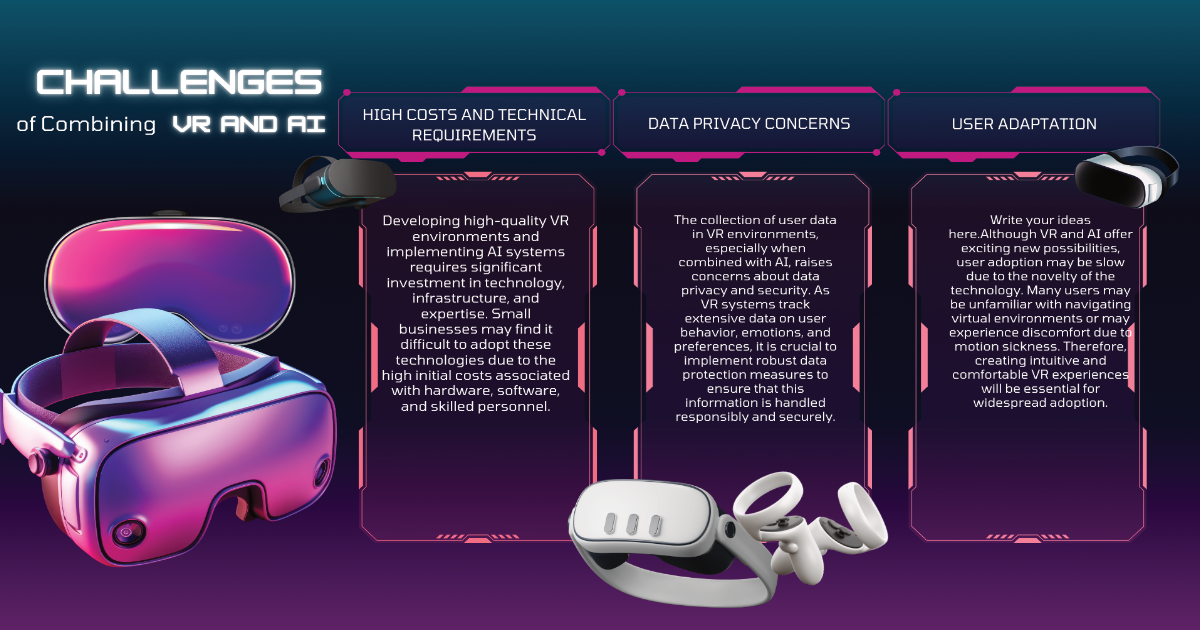
4. Challenges of Combining VR and AI
While the potential of VR and AI is vast, there are challenges that must be addressed to fully unlock their capabilities.
a. High Costs and Technical Requirements
Developing high-quality VR environments and implementing AI systems requires significant investment in technology, infrastructure, and expertise. Small businesses may find it difficult to adopt these technologies due to the high initial costs associated with hardware, software, and skilled personnel.
b. Data Privacy Concerns
The collection of user data in VR environments, especially when combined with AI, raises concerns about data privacy and security. As VR systems track extensive data on user behavior, emotions, and preferences, it is crucial to implement robust data protection measures to ensure that this information is handled responsibly and securely.
c. User Adaptation
Although VR and AI offer exciting new possibilities, user adoption may be slow due to the novelty of the technology. Many users may be unfamiliar with navigating virtual environments or may experience discomfort due to motion sickness. Therefore, creating intuitive and comfortable VR experiences will be essential for widespread adoption.
5. SEO Strategies for VR and AI-Driven Content
As a Professional SEO Specialist, it is important to recognize that traditional SEO strategies may not be fully applicable to VR and AI-driven content. However, there are several key practices that can enhance the visibility and performance of VR and AI-powered experiences.
a. Optimizing for Voice Search
AI-powered voice search is becoming more prevalent as consumers increasingly rely on voice assistants like Siri, Alexa, and Google Assistant. To optimize for voice search, content should be structured in a conversational tone and focus on long-tail keywords that match how users typically speak. Additionally, ensuring that VR environments can be navigated through voice commands can enhance the user experience and boost search rankings.
b. Creating Interactive and Engaging Content
Engagement metrics, such as time spent on a page and user interactions, are key factors that influence search rankings. VR environments naturally encourage longer engagement times and deeper interactions, which can have a positive impact on SEO. To capitalize on this, businesses should create VR experiences that are both interactive and immersive, encouraging users to spend more time exploring the content.
c. Leveraging AI for Data-Driven Content Strategies
AI’s ability to analyze vast amounts of data allows SEO specialists to develop more targeted and effective content strategies. By analyzing user behavior and preferences within VR environments, AI can help identify which types of content resonate most with users and optimize future campaigns accordingly. This data-driven approach can enhance content relevance and drive higher engagement, ultimately improving search rankings.
d. Implementing Structured Data
Structured data, or schema markup, is essential for helping search engines understand and categorize content. For VR and AI-powered experiences, implementing structured data can improve the visibility of these experiences in search results. For example, adding schema for interactive content or virtual tours can enhance the chances of appearing in rich search results, such as carousels or featured snippets.
6. Best Practices for Integrating VR and AI in Digital Marketing
To fully leverage the potential of VR and AI, businesses must adopt best practices that maximize the value of these technologies while ensuring a seamless user experience.
1. Start with User-Centric Design
When creating VR experiences, prioritize user comfort and ease of navigation. Use AI to analyze user interactions and continuously improve the design and functionality of the virtual environment based on user feedback and behavior.
2. Focus on Personalization
A key advantage of AI is its ability to create personalized experiences. Use AI to analyze user data and deliver content that is tailored to individual preferences and needs. Personalization can greatly boost user engagement and improve the chances of conversions.
3. Optimize for Mobile VR
With the increasing popularity of mobile VR platforms, such as Google Cardboard and Samsung Gear VR, it is essential to optimize VR experiences for mobile devices. Ensure that the content is responsive and performs well on a range of devices, from high-end headsets to mobile VR solutions.
4. Invest in Analytics and Performance Tracking
To continuously improve VR and AI-driven experiences, invest in analytics tools that can track user behavior and engagement within virtual environments. Use AI to analyze this data and identify areas for optimization, such as improving navigation, adjusting content recommendations, or enhancing the overall user experience.
7. The Future of VR and AI: What’s Next?
As VR and AI technologies continue to evolve, we can expect even more sophisticated and immersive experiences that blur the line between the physical and digital worlds. Emerging trends such as AI-generated virtual environments, haptic feedback systems, and advanced user interfaces will push the boundaries of what is possible in VR.
From a digital marketing perspective, the integration of AI and VR will
lead to more personalized, engaging, and data-driven campaigns that offer a competitive advantage in an increasingly crowded marketplace. Businesses that embrace these technologies early on will be well-positioned to capture the attention of tech-savvy consumers and build lasting brand loyalty.

